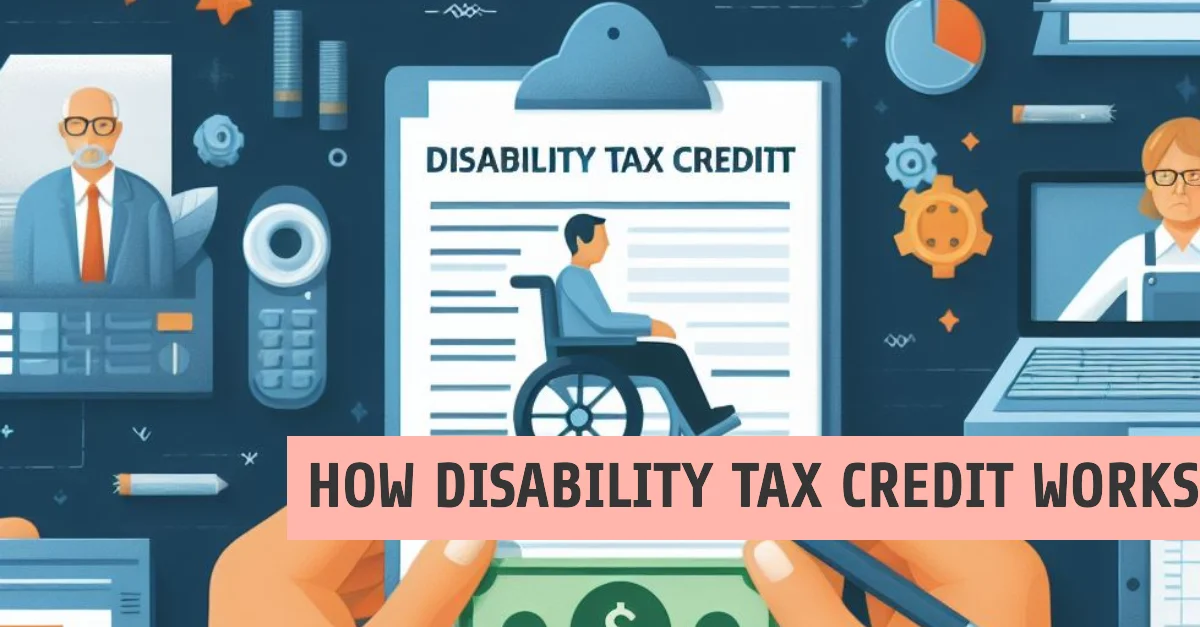For Advertising Contact Us
How Disability Tax Credit Works – What is DTC and How to Qualify for Disability Tax Credit?

Tax credits can make a significant impact on individuals with disabilities, providing financial relief and support. The Disability Tax Credit (DTC) is a valuable resource that offers tax savings to those who qualify. Understanding the eligibility criteria and application process is crucial for individuals seeking to benefit from this program. In this guide, we will examine into how the Disability Tax Credit works, what DTC is, and the steps to qualify for Disability Tax Credit.
Understanding DTC: Definition and Types
Before venturing into the intricacies of the Disability Tax Credit (DTC), it’s important to have a clear understanding of what it entails and the various types that exist. DTC is a non-refundable tax credit that provides tax relief for individuals who have a severe and prolonged impairment in physical or mental functions. This credit is designed to help offset the additional costs that people with disabilities often incur.
| What is DTC? | Definition of Disability Tax Credit |
| Who Qualifies for DTC? | Eligibility Criteria for Disability Tax Credit |
| How to Apply for DTC? | Process of Applying for Disability Tax Credit |
| Benefits of DTC? | Advantages of Disability Tax Credit |
| Duration of DTC? | Timeframe for Disability Tax Credit |
Perceiving the nuances of the DTC can help individuals navigate the tax credit application process more effectively.
What is the Disability Tax Credit?
To gain a comprehensive understanding of the Disability Tax Credit (DTC), it’s imperative to know that it is a tax credit available to individuals with disabilities. This credit can provide financial relief by reducing the amount of income tax that a person with a disability or their supporting person has to pay.
Types of Disabilities Covered by DTC constitute a range of physical and mental impairments that impact an individual’s daily functioning. These disabilities may include but are not limited to vision impairments, mobility limitations, mental health challenges, intellectual disabilities, and chronic illnesses.
| Physical Disabilities | Mental Disabilities |
| Visual Impairments | Mobility Limitations |
| Mental Health Challenges | Intellectual Disabilities |
| Chronic Illnesses | |
Perceiving the breadth of disabilities covered by the DTC is crucial for individuals seeking to benefit from this tax credit. Understanding the specific types of impairments that qualify can make a significant difference in accessing the financial support available.
Types of Disabilities Covered by DTC
Eligibility Criteria and Factors to Consider
Assuming you are considering applying for the Disability Tax Credit (DTC), it is crucial to understand the eligibility criteria and various factors that can impact your qualification for this tax credit.
- Main keywords: Disability Tax Credit, eligibility criteria, factors, qualification
Perceiving the intricate details of the DTC application process can significantly increase your chances of success. Let’s research deeper into the key aspects that determine your eligibility for the Disability Tax Credit.
Determining Your Eligibility for DTC
Factors such as the severity of your disability, the duration of your impairment, and the impact of your condition on performing daily activities play a crucial role in determining your eligibility for the DTC. The Canada Revenue Agency (CRA) assesses these key factors to decide if you meet the criteria for claiming the Disability Tax Credit.
Factors Affecting DTC Qualification
Factors affecting DTC qualification include the extent to which your disability restricts your ability to perform basic activities of daily living, such as walking, speaking, hearing, and dressing. Additionally, the need for life-sustaining therapy and the cumulative effect of impairments are necessary considerations for DTC eligibility.
- Main keywords: Disability Tax Credit, qualification factors, daily activities, life-sustaining therapy
Assume that meeting the eligibility criteria does not guarantee automatic approval for the DTC. The documentation provided in your application and the thoroughness of your medical practitioner’s assessment also play a significant role in the approval process.
Eligibility for Disability Tax Credit
Factors such as a detailed description of your impairment, medical evidence supporting your disability claim, and the completion of Form T2201 by a qualified practitioner are crucial for establishing your eligibility for the Disability Tax Credit.
- Main keywords: Disability Tax Credit, impairment description, medical evidence, Form T2201
Assume that providing incomplete or insufficient information in your application can lead to delays or rejection of your DTC claim. It is necessary to meticulously adhere to the application guidelines and ensure all necessary documentation is submitted to support your claim.
The Application Process: A Step-by-Step Guide
Not sure where to start with your Disability Tax Credit (DTC) application? Don’t worry, we’ve got you covered with this step-by-step guide to help you navigate the process smoothly.
| Step 1 | Gather all necessary documentation, including medical records, completed Form T2201, and any supporting documents. |
| Step 2 | Complete Form T2201 – Disability Tax Credit Certificate with accurate and detailed information about your disability and its impact on your daily life. |
Tips for a Successful DTC Application
When applying for the Disability Tax Credit (DTC), it’s crucial to be thorough and provide as much information as possible. Accuracy and completeness are key to a successful application. Make sure to include all relevant medical documentation and details about how your disability affects your daily life. Consulting a healthcare professional or tax expert can help ensure your application is strong and well-supported.
Step-by-Step Instructions for Applying for DTC
To apply for the Disability Tax Credit (DTC), follow these step-by-step instructions:
| Step 1 | Download and complete Form T2201 – Disability Tax Credit Certificate. |
| Step 2 | Submit the completed form, along with any supporting documents, to the Canada Revenue Agency (CRA) for review. |
Step-by-Step Instructions for Applying for DTC
| Step 1 | Gather all necessary documentation, including medical records, completed Form T2201, and any supporting documents. |
| Step 2 | Complete Form T2201 with detailed and accurate information about your disability and how it impacts your daily life. |
The Implications of DTC
Pros and Cons of the Disability Tax Credit
Pros
| Pros | Cons |
| Provides financial relief for individuals with disabilities | Application process can be complex and time-consuming |
| Helps offset the additional costs associated with disability | Eligibility criteria may be stringent for some individuals |
| Can result in tax savings for individuals and families | Some individuals may face challenges in proving their disability |
| Supports independence and self-sufficiency | Not everyone with a disability may qualify for the credit |
| Offers financial assistance for medical expenses and support services | Changes in personal circumstances may affect eligibility |
How DTC Impacts Individuals and Families
Disability Tax Credit can have a significant impact on individuals and families. For those who qualify for the credit, it can provide much-needed financial support to help manage the costs associated with disability. This support can range from assistance with medical expenses to help with everyday living expenses.
This additional financial assistance can help individuals with disabilities maintain a higher quality of life and access necessary resources and support services. It can also reduce the financial burden on families who are supporting a loved one with a disability, allowing them to focus more on providing care and support rather than worrying about the financial implications.
To wrap up
Presently, we have investigated into the intricacies of the Disability Tax Credit (DTC) – understanding what it is and how to qualify for it. The DTC offers financial assistance to individuals living with physical or mental impairments that significantly impact their daily lives. By meeting the eligibility criteria and completing the necessary forms with accurate information, individuals can benefit from tax-saving opportunities and additional financial support. It is imperative to seek guidance from healthcare professionals and tax experts to navigate the application process smoothly and ensure eligibility for this valuable credit.



